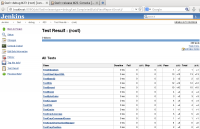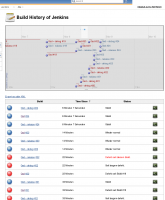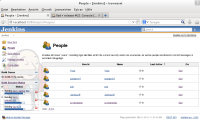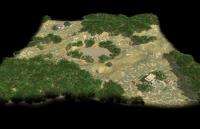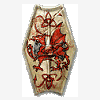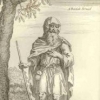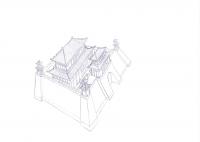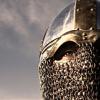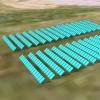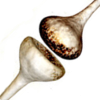Leaderboard
Popular Content
Showing content with the highest reputation on 2014-03-09 in all areas
-
The idea of different/larger units needing more "garrison slots" is one that has been in the game design for a long time. It's just not something anyone has been interested in implementing. I am more than willing to make the Equine Transport tech do exactly this: Reduce garrison space for cavalry. Indeed, I made the tech to compete with the Athenian marine tech and it made some historical sense since the Persians were the first people to transport cavalry squadrons across the sea with their warships (see: The Battle of Marathon). But if we ever get the garrison slot feature implemented, then I will definitely change this tech to be more realistic. Until then, I think it can stay as something unique for the Persians.2 points
-
Cretans, Aetolians and Illyrians could work as pirates as well. And, yes, Iberians desperately need some way of access to arrow ships and bigger transport capacity.2 points
-
After making my first steps with the Atlas editor by simply converting one of my old favourite Scenarios into a Skirmish map (see also attached, credit should remain to the original author), I have now created my first map from scratch, named "Civitas Taunensium". This is a Scenario featuring the Romans against two Germanic tribes (represented by the Gauls here). Description: "The fertile plains between the Taunus mountains in the west and the Vogelsberg vulcanic ridge in the east were vital to the ambition of the Roman Empire to expand on the right bank of the Rhine. Secured by the Limes Germanicus, many settlements, forts and farms were situated in an area which finally fell to invading Germanic tribes around 250 AD when Rome retreated to the Rhine river again." The map has some reference to the real world geographically (actually only a few milia passuum from were I live) but does not aim to be historically correct. It is loaded with resources, not very well balanced and far from being professional, but maybe it's fun for you to play and explore. EDIT: Moved the screenshots to external links to reduce size of attachments. - watching the border - the stone circle - of wolf and man - repairs at the gate - farmland - mountain range Civitas Taunensium (Scenario).zip Mediterranean Coves (3) (Skirmish).zip2 points
-
Athenians can do that too, and mauryan warriors can be trained from a hero elephant. It's not really a problem for me. We make abstraction of the entire grow-train-fight cycle. It's just a nice trait some civs have.2 points
-
Here is the next batch of signatures a flat, rectangular one for those who already have massive signatures and one tilted off at 20 degrees2 points
-
Some probably know Jenkins already. It's an Open Source tool for automated building and testing. The idea is to notice bugs as soon as possible after they are introduced. Let's compare this situation with and without Jenkins to show what I mean (not using Bob and Alice as names for once): Situation: Yves breaks a test only in debug builds Currently (without Jenkins): Yves has tested his change in the game and he has launched the tests in release mode. Everything works as expected and he commits. Two weeks later there's a forum post about a strange problem with the tests. Leper and Sander both can't reproduce it in their first try. On their systems the tests work well. After a few questions in the forum they figure out it only happens in debug builds and after an hour of collaborative analysis they find and fix the problem. Unfortunately some other commits were based on this change during the last two weeks and more changes need to be done. Future (with Jenkins): Yves has tested his change in the game and he has launched the tests in release mode. Everything works as expected and he commit. Jenkins does some automated building and testing with various configurations. One hour later, Yves gets a mail from Jenkins informing him that the tests don't work in debug mode. Yves has worked on the change just an hour ago and everything is still fresh in mind and he can solve the problem quickly because he already knows where to search for it. That's an optimal case but there are a lot of situations where automated testing can be useful. Just think about how often someone broke a test in the past which caused a lot of unnecessary noise on IRC when this person could just have fixed it an hour after breaking it and nobody would have noticed. I you have some time I recommend watching this video, it explains the topic quite well in my optinion (the general part in the beginning at least): I also recommend this short and general overview of what continuous integration means: I have started experimenting a bit with Jenkins and figuring out what can be done and what could be useful for us. Here's what I have so far: Basic building and testing procedure: Jenkins checks for new svn revisions every 10 minutes. It uses svn update for the checkout instead of doing a fresh checkout everytime. Runs update-workspaces.sh with the newly introduced option "--jenkins-tests" Runs make Runs our test executable and redirects the output to an xml file. Fixes a little incompatibility with the XML schema with sed and then uses the generated XML to display the results of the testsThese steps get exectued for both debug and release configurations. Jenkins has a web GUI which displays and visualizes all kinds of useful information. Unfortunately I don't have a DMZ setup at home, so I don't want to make the server accessible to the internet. But I've made some screenshots to give you an impression of how it looks: This is the overview showing a trend (currently a dark cloud because many builds failed while I was testing). On the bottom left corner you see build with two different configurations (debug and release) running. Here you see the tests listed. They all passed in this run. There are also nice graphs showing a history of the tests either for all tests or individual tests. Of course the graph is not very interesting with only two builds and 100% tests passed in both builds: There's also a build history showing when which tests succeeded or failed: Last but not least, Jenkins keeps track of commits and automatically adds people who do the commits to its configuration. We could assign email addresses to people and send mails if one of their commits doesn't pass a build or a test (I heard you can do that, but I haven't tested it yet). I'll continue improving my Jenkins setup to figure out what can be done and what's useful for us. At some point we should probably think about configuring a Jenkins server which is accessible through the internet. At the moment this would be too early IMO. I know that Philip already has a sever, but as far as I know he only uses it for building and hasn't integrated tests or anything like that.1 point
-
Hi! Started with Atlas the other day, and, well, it seems to be going well. I'm really enjoying the editing capabilities, and the navigation is quite nice - I'm coming from Blender, so I've become a custom to a certain type of navigation setup. So far only two maps are complete (I would like to add some waypoints/ triggers, and other essentials, but as of yet I am unsure as to how that happens with worlds... XML editing?); I do plan on eventually modelling new units, buildings, and environment props. The first map shares no relation with history, it is a situation I have come up with, and a landscape that shares nothing with Briton - It was a test bed for painting heightmaps. Iron Age Hillfort Image: Hillfort Set on the Southern coast of England, players can either take the role of the landed Roman II Augusta legion who have been sent to relieve the city, or the attacking Iceri who are determined to take back their tribal lands. Short description in Atlas: "AD 188, the Roman Legion, II Augusta, arrives on the South coast to relieve the Roman garrison stationed at Viverenx from the vicious revolt of the Iceri tribe." Hadrian's Wall, Eastern coastline Image: Hadrian's Wall, East Set in the North-East of England, the map is actually modelled from maps of the North shields, Tynemouth, and other surrounding areas. Although the wall does not take a 100% accurate historical route through the landscape; I believe the wall may have ended further inland from the coast. Anyhow, this map is quite buildup and is for three players. Short description in Atlas: "The Empire Hadrian's Great Wall has come under attack by the Pictish* tribes; parts of the wall have crumbled under repeated attack and require urgent repairs. News is spreading that the tribes in the North are preparing for an all-out assault. The II Augusta Legion has been stretched thinly with recent attacks..." *I haven't read much about this era in history for a while so I cannot say for certain if the picts were around in AD 188, but either way, they are labelled as one of the players for the time being. The Brigante are the third party, with Roman Legion II Augusta being the second. I'll upload the maps to my Google drive to share - I am right in thinking I just need to zip the .xml, and .pmp files, yes?1 point
-
You can already garrison ballistae on quinqueremes, although it turns into a bit of a missile barge if you garrison all 50 garrison slots with them. I think once turrets are developed this will work better.1 point
-
I don't see any errors, only warnings with a 3rd party library. Is something not working?1 point
-
In Alpha 15, Atlas won't work on OS X, that's a known problem and different than what is reported here.1 point
-
1 point
-
I would recommend having Etruscans somehow incorporated into the mercenary ranks.1 point
-
Triggers are basically ways to change things after the match has been started, based on specific conditions (there could be a trigger that adds X units at spot Y, if condition Z is fulfilled, or display a message once another condition is met, etc). So not really related to physics at all.1 point
-
I think something like the WC III system is great for mercenaries. The structure is invulnerable, non-capturable, you just need nearby units to activate the hiring (it's like a neutral shop where you can instantly purchase units). Makes sense since mercenaries go where the gold is, they don't have an owner. (If we want more realism we could make it destroyable, so one player could choose to purge the mercenary camp, but attacking it would mean the available units inside spawning as gaia to fight him). Then on hiring, again WC III style, each unit has a different replenishment rate, number of maximum availability in the camp, and even a starting delay (so you can't hire elephants to rush within the second minute of the game), depending on the units strength. So it works like, once the starting delay time of a unit has passed, the first unit of that type is available for you to hire it. Then, when it's replenishment time has passed, the unit is available for hiring again, but only in numbers up to it's maximum availability, no matter how much time has passed. Warcraft has max available numbers from 1 to 3 for each mercenary, but it has a pop cap of 100, so we could have something like triple that number. Another idea that came to mind, if mercenary camps are implemented, is moving several mercenary factional units to it and replace them with with some native unit in the civ's rooster. For example, Macedon has several unused cavalry units that that could replace the Thessalians if we move them to the mercenary camp, and Thessalians fought for other factions as well anyway.1 point
-
I think this replaced the ability to carry cavalry for (some sizes of?) Persian ships when the trait got shared, so that other civs don't get some annoying "you can't transport cavalry" message. Not sure how I feel about it, training horses out of a ship is stranger than training marines though. A workaround could be horses needing two transport slots for all other civs, while 1 for persians due to their skill in transporting horses. This could apply to other big units, with bolt throwers needing 2 as well, elephants/rams/stonethrowers needing 4 and siege towers needing 8 or 10 if transportable at all.1 point
-
The only thing I need to know is how to bias the realistic terrain generator to create a valley. Furthermore do I want to know how you made sure that the levels are playable. I noticed BTW that a lot of other RM-scripts use a heightbased texture painting too without looking very tiled. I'll try and see if it works for me. You can influence the general shape of the map by giving a rough initial heightmap (e.g. 3x3) like: initialReliefmap = [ [heightRange.max, (heightRange.max + heightRange.min) / 2, heightRange.max], [heightRange.max, heightRange.min, heightRange.max], [heightRange.max, (heightRange.max + heightRange.min) / 2, heightRange.max]];and then give it to getBaseTerrainDiamondSquare like: var myReliefmap = getBaseTerrainDiamondSquare(g_Map.size + 1, heightRange.min, heightRange.max, 0.5, initialReliefmap);You will have to apply the reliefmap to the g_Map if you finished manipulating it: setReliefmap(myReliefmap);So if you use the realistic terrain demo just add the initialReliefmap code (search for initialReliefmap to see where. the other preset initial heightmaps are documented out and will form islands). It then will look similar to this (tiny, 2 players, seed 1): (The diagonal appearance comes from the start locations being added that way, not from the initialReliefmap. The right and left side medium height "valleys" however do.) The getBaseTerrainDiamondSquare function doubles the size until it's bigger then the needed size and then cuts the bottom left part of the needed size. That will change in the future so the center is used rather then the bottom left. So until now on some map sizes the lake will not be in the center of the map. Additionally keep in mind that the shape is most suitable for 2 players. You might want to make the initialReliefmap depend on the number of players here because it's not radial symmetric. Also you should change on which height the start locations are added and add more tree covered "height levels" (textueByHeight array). Hope I could help. (Could someone PLZ make the post editor stop adding/removing spaces tabs and newlines insanely?)1 point
-
It might be an idea indeed for a game mode. (Fight the Barbarians/Pirates or so) In this mode there are/is a (few) raider settlement(s) who are controlled by the AI. They mainly raid and get resources for it to expand. If you are too weak, so the enemy will become stronger and wipe you out. Therefore it is needed to protect your citizens and your base. By strengthening yourself, your enemy will be weakened because of the died soldiers and no resources to create new. Finally it will be relatively easy to destroy the enemy base and win the game. Of course there are tons of other gameplay features that could be added to make this game mode even more interesting (like trade routes to defend etc.)1 point
-
There is no supply work yet, only some code in the engine to get a message when the entity's territory has changed. I got a bit of headache on really implementing the supply itself (I know some kind of a way to implement it, but don't know how to really start, had a few stucked trials and paused work for a while ) I'm now trying some Random Map Scripting. See if I can create some fun maps!1 point
-
I'm sorry, but your post is very hard to read. It looks like you're throwing all sorts of suggested and even planned features on a pile. In any way, when we have triggers, map makers will be able to do all these sorts of things. (except capturing, as that's not implemented yet).1 point
-
1 point
-
Maybe that's the same (admin Utility and regular Utility)? I don't know this specific issue. Forwarding ports is indeed opening a small gate to your computer, so it is a bit more dangerous. But I don't expect any problems. As long as no applications are listening on it, not a lot can happen (your computer won't process the messages it gets). And if an application (like 0 A.D. in this case) is listening on that port, hackers can only change 0 A.D. behaviour. Which means they still have to find a hole in our code to exploit that before they can access other parts of your computer. As we have very few players (and even fewer players that forwarded the port), it's not worth for hackers to find an exploit in our app. Off course, when we know about an exploit, we will try to fix it as soon as possible, and when more players become active, we will need to have more people working on security. But I don't foresee problems in the next few years.1 point
-
Pontos Army ( like to Carthage: a army of mercenaries) that is one of many is Mitridates IV called the Hannibal of East. (Wikipedia) : T he term did come to apply to a separate state after the establishment of the Kingdom of Pontus, beyond the Halys River (Kızıl river). The Persian dynasty which was to found this kingdom had during the fourth century B.C. ruled the Greek city of Cius (or Kios) in Mysia, with its first known member being Ariobarzanes I of Cius and the last ruler based in the city being Mithridates II of Cius. Mithridates II's son, also called Mithridates, would become Mithridates I Ktistes of Pontus ("Ktistes" meaning "The Founder"). During the troubled period following the death of Alexander the Great, Mithridates Ktistes was for a time in the service of Antigonus, one of Alexander's successors, and successfully maneuvering in this unsettled time managed, shortly after 302 BC, to create the Kingdom of Pontus which would be ruled by his descendants mostly bearing the same name, till 64 BC. Thus, this Persian dynasty managed to survive and prosper in the Hellenistic world while the main Persian Empire had fallen. As the greater part of this kingdom lay within the immense region of Cappadocia, which in early ages extended from the borders of Cilicia to the Euxine (Black Sea), the kingdom as a whole was at first called "Cappadocia towards the Pontus", but afterwards simply "Pontus," the name Cappadocia being henceforth restricted to the southern half of the region previously included under that title. This kingdom reached its greatest height under Mithridates VI or Mithradates Eupator, commonly called the Great, who for many years carried on war with the Romans. Under him, the realm of Pontus included not only Pontic Cappadocia but also the seaboard from the Bithynian frontier to Colchis, part of inland Paphlagonia, and Lesser Armenia. Pontic army : Due to the pontic roots, Pontic army was mixed and original. Mithridates was clearly a persian ruler, but heavily hellenized. His army was composed by greek style and persian style warriors. The "old" army, those of the beginnings in 300bc, was probably still heavily persian in style. It could have counted on levy spearmen like the sparabara, light mountaineers assault troops as the kardaka, and archers. Elite units would have been probably of royal takabara and kardaka style. Pontic cavalry was described having units of numerous horse skirmishers, an unusual fact as most eastern horsemen use bows instead. This was a product of the ancient persian style cavalry. Local troops were also available in large numbers, from cappadocia for the most, scythians from the black sea as mercenaries, even sarmatians. Nearby armenian mountaineers could also make valuable and cheap raiding infantry. Lately, in 150 bc., Pontus accesses to its greatest extent during Mithridates VI reign, and troops from all minor asia were available. A large part of the infantry was now composed of light "romanized" soldiers, driven from the light successors thureophoroi and the thorakitai evolution. Although this army was still impressive, it was no match against the Roman legions which crushed them definitely at Chaeroneia, when the pontic commander, Archelaus, gathered an army of 120 000 composed of Pontic, Thracian, Bithynian, Cappadocian, Scythian, Phrygian and Galatian troops. Sulla's tactic for his 40 000 roman legionaries and greek-macedonian defected troops rendered the famous pontic scythian chariots useless while having his infantry on the top of the chaeronian hills.1 point
-
In historiography[edit] Herodotus reported that the Sarmatians were descendants of Amazons and Scythians, and that their wives observed their ancient maternal customs, "frequently hunting on horseback with their husbands; in war taking the field; and wearing the very same dress as the men". Moreover, said Herodotus, "No girl shall wed till she has killed a man in battle". In the story related by Herodotus, a group of Amazons was blown across the Maeotian Lake (the Sea of Azov) into Scythia near the cliff region (today's southeastern Crimea). After learning the Scythian language, they agreed to marry Scythian men, on the condition that they not be required to follow the customs of Scythian women. According to Herodotus, this band moved toward the northeast, settling beyond the Tanais (Don) river, and became the ancestors of the Sauromatians. According to Herodotus, the Sarmatians fought with the Scythians against Darius the Great in the 5th century BC. Hippocrates describes them as: "They have no right breasts...for while they are yet babies their mothers make red-hot a bronze instrument constructed for this very purpose and apply it to the right breast and cauterize it, so that its growth is arrested, and all its strength and bulk are diverted to the right shoulder and right arm." Amazons came to play a role in Roman historiography. Caesar reminded the Senate of the conquest of large parts of Asia by Semiramis and the Amazons. Successful Amazon raids against Lycia and Cilicia contrasted with effective resistance by Lydian cavalry against the invaders (Strabo 5.504; Nicholas Damascenus). Gnaeus Pompeius Trogus pays particularly detailed attention to the Amazons. The story of the Amazons as deriving from a Cappadocian colony of two Scythian princes Ylinos and Scolopetos is due to him. Pliny the Elder records some surprising facts pointing to the valley of the Terme River as possibly being their home: a mountain named for them (the modern Mason Dagi), as well as a settlement Amazonium; Herotodus (VI.86) first mentions their capital Themiscyra, which Pliny locates near the Terme.[77] Philostratus places the Amazons in the Taurus Mountains. Ammianus places them east of Tanais, as neighbouring the Alans. Procopius places them in the Caucasus. Diodorus Siculus (Bibliotheca historica chapter 49) derived the Amazons from Atlantis and located them in western Libya. He also relates the story of Hercules defeating the Amazons at Themiscyre. Although Strabo shows skepticism as to their historicity, the Amazons in general continue to be taken as historical throughout Late Antiquity. Several Church Fathers speak of the Amazons as of a real people. Solinus embraces the account of Pliny. Under Aurelianus, captured Gothic women were identified as Amazons (Claudianus). The account of Justinus was influential, and was used as a source by Orosius who continued to be read during the European Middle Ages. Medieval authors thus continue the tradition of locating the Amazons in the North, Adam of Bremen placing them at the Baltic Sea and Paulus Diaconus in the heart of Germania. Speculation that the idea of Amazons contains a core of reality is based on archaeological findings from burials, pointing to the possibility that some Sarmatian women may have participated in battle. These findings have led scholars to suggest that the Amazonian legend in Greek mythology may have been "inspired by real warrior women".[76] Evidence of high-ranking warrior women comes from kurgans in southern Ukraine and Russia. David Anthony notes, "About 20% of Scythian-Sarmatian "warrior graves" on the lower Don and lower Volga contained women dressed for battle similar to how men dress, a phenomenon that probably inspired the Greek tales about the Amazons."[83] Mounted Amazon in Scythian costume, on an Attic red-figure vase, ca 420 BCE Up to 25% of military burials were of armed Sarmatian women usually including bows.[84] Russian archaeologist Vera Kovalevskaya points out that when Scythian men were away fighting or hunting, nomadic women would have to be able to defend themselves, their animals and pasture-grounds competently. During the time that the Scythians advanced into Asia and achieved near-hegemony in the Near-East, there was a period of twenty-eight years when the men would have been away on campaigns for long periods. During this time the women would not only have had to defend themselves, but to reproduce and this could well be the origin of the idea that Amazons mated once a year with their neighbours, if Herodotus actually based his accounts on fact.[84] Before modern archaeology uncovered some of the Scythian burials of warrior-maidens entombed under kurgans in the region of Altai Mountains and Sarmatia,[85] [86] giving concrete form at last to the Greek tales, the origin of the Amazon story had been the subject of speculation among classics scholars. In the 1911 Encyclopædia Britannica speculation ranged along the following lines: While some regard the Amazons as a purely mythical people, others assume an historical foundation for them. The deities worshipped by them were Ares (who is consistently assigned to them as a god of war, and as a god of Thracian and generally northern origin) and Artemis, not the usual Greek goddess of that name, but an Asiatic deity in some respects her equivalent. It is conjectured that the Amazons were originally the temple-servants and priestesses (hierodulae) of this goddess; and that the removal of the breast corresponded with the self-mutilation of the god Attis and the galli, Roman priests of Rhea Cybele. Another theory is that, as the knowledge of geography extended, travellers brought back reports of tribes ruled entirely by women, who carried out the duties which elsewhere were regarded as peculiar to man, in whom alone the rights of nobility and inheritance were vested, and who had the supreme control of affairs. Hence arose the belief in the Amazons as a nation of female warriors, organized and governed entirely by women. According to J. Viirtheim (De Ajacis origine, 1907), the Amazons were of Greek origin [...] It has been suggested that the fact of the conquest of the Amazons being assigned to the two famous heroes of Greek mythology, Heracles and Theseus [...] shows that they were mythical illustrations of the dangers which beset the Greeks on the coasts of Asia Minor; rather perhaps, it may be intended to represent the conflict between the Greek culture of the colonies on the Euxine and the barbarism of the native inhabitants.1 point
-
I think a mint could function for gold like the lumber mill did for lumber in Warcraft II: the mint would be a gold drop off point, and having it also increases the amount of gold obtained per gold gathered (so for instance, every 100 gold gathered would yield 125 gold to the player if they have a mint), simulating greater efficiency in processing the gold.1 point
-
Following the minecraft-server guide will work if you replace the port they use (25565) with our port (20595).1 point
-
That'd be great, need to define concepts for the artists to work on if it gets approved by the team.1 point
-
There's a ticket for this bug but I never looked into it until now http://trac.wildfiregames.com/ticket/2111 High Quality Depth of Field, it's a post-processing effect that requires GLSL shaders. You can try it out in Atlas, on the environment tab under "Post effect", if you have all the fancy graphics settings enabled.1 point
-
FYI it looks like OpenCollada supports up to version 2010 of 3ds Max when I look here. Maybe compatable with 2013? https://github.com/KhronosGroup/OpenCOLLADA/tree/master/COLLADAMax Have you guys tried this? Or perhaps contacting the developers? http://sourceforge.net/projects/colladablender/1 point
-
1 point
-
Now lads, lets us return to the topic. My suggestion comprise of several techs and policy decision. It began with xsaça-pā-van tech available when player achieve tier II civil centre, after gaining Xsaca-pa-van tech player now receives a certain number of provincial levy from Carians, Phoenician, Egyptians from Phoenician Trireme and Kushite warrior from barracks plus Achaemenid satrapy court as the only facility to train advanced units like Saka Haomavarga riders, Hoplite mercenaries, Kardakes and Indian Elephant but requires certain technology or policy decision to unlock it. As player make such decision, player may suffer certain penalties such as logistic penalty and/or recruitment penalty.1 point
-
I would be amazing if we could get this working, it's been something we have been wanting far too long now. As far as how to handle failed tests, maybe we could just run it on the main branch and revert failing commits? (That might be a better use case for git though)1 point
-
1 point
-
1 point
-
i'm glad you're doing all this testing, Lion, 'cause i will have to switch my XP computer to linux before April 8th Let me know what your choice is and how to install the game on it1 point
-
Thanks for the input and the support! At the moment I'm looking into how it works technically and what our possibilities are. There are a lot of potential designs but in the first step I don't worry about productive development processes or licensing topics. I mean we could do something like Mozilla with their mozilla-inbound repository where stuff gets committed first before it goes into mozilla-central. We could also checkout custom github repositories or branches and run our tests there. Maybe we could download and apply smaller patches. All that not only needs to work technically, but there are security concerns (we are downloading and executing code) and processes need to be defined. For a solution like the inbound-repository for example, there are a lot of unanswered questions at the moment. Are there manual steps involved? Will committing be queued when one patch is being tested? What happens if a change that comes earlier in the queue breaks the a later patch in the queue etc. I plan to look into how different systems (Windows, Linux, Mac) can be connected and if data can be aggregated at the same place. I'll focus on the technical aspect first.1 point
-
It's a great initiative, thanks for looking into it It would be best to have at least one Windows server, at least one Linux server, and at least one OS X server. The first two I think are pretty easy, Windows and Linux VMs can be run on many servers, are plentiful and cheap. Not so for the OS X server due to Apple's licensing, there are some virtualization/cloud services for Macs out there, but maybe we can find a community member with a Mac they are willing to setup and "donate" as a server. Anyway, that's further down the line and just having any Jenkins autobuild/testing server setup would be an awesome first step. Philip's work on this was quite promising and interesting, so I'm glad to see it moving forward again.1 point
-
Even better it should check every patch posted on the bug system and check it before anyone commits it. No idea if trac support it (github does, see here e.g. https://github.com/residualvm/residualvm/pull/840 ). Eventually I may provide a server for it.1 point
-
Both were the same issue and are fixed in SVN. I've changed the behavior slightly too (it scrolls lightly now when you move over the map) but I can change that back.1 point
-
Perhaps the mayor can calc the favored gathering rates. The group then should automatically determine how to achieve these rates for example by checking available technologies, check which resources to gather (and also bushes vs farms etc) and finally check whether the storehouse is effectively placed and if not than build a better placed one. The third point should also be kept in mind whilst deciding the second.1 point
-
The mayor i've mentioned is thinning. Probably at the end there is no mayor, each group has all info it needs, why mayors? At the end there is only time, space, food, wood, stone, metal and health. What the bot manages are resources, groups can request resources to build or train and places to do their stuff. They'll get them when they are available. Probably there is always a backlog, here decisions are made and resources not wasted. I've found a JavaScript implementation of SHOP2, a HTN planner. If the bot kinda gets an idea of future, that would be great. Some group thoughts: Cultures should celebrate victories, how could a dance company gather attention. Healers? How do they find units sending SOS, without attempting suicide. When should a unit garrison? At 50% health? What is the minimum/cheapest group in each civilisation able to level towsers? Can units form letters to ask for HELP ?1 point
-
I like this one. You ear about Naval siege tower? This I'm not sure is accurate with that tower over. But can be nice for upgrade now Persian ca n have a semi siege tower Ram. This one is one most missed in a RTS, like a Crossbow. The Gastraphetes. The gastraphetes (from Ancient Greek γαστραφέτης, English translation: "belly-releaser") was a hand-held crossbow used by the Ancient Greeks.[1] It was described in the 1st century AD by the Greek author Heron of Alexandria in his work Belopoeica, which draws on an earlier account of the famous Greek engineer Ctesibius (fl. 285222 BC). Heron identifies the gastraphetes as the forerunner of the later catapult, which places its invention some unknown time prior to c. 420 BC.[2] Unlike later Roman and medieval crossbows, spanning the weapon was not done by pulling up the string, but by pushing down an elaborate slider mechanism. A fairly detailed description and drawing of the gastraphetes appears in Heron's Belopoeica (Ancient Greek Βελοποιικά, English translation: On arrow-making), drawn from the account by the 3rd-century BC engineer Ctesibius. The weapon was powered by a composite bow. It was cocked by resting the stomach in a concavity at the rear of the stock and pressing down with all strength. In this way considerably more energy can be summoned up than by using only one arm of the archer as in the hand-bow. There are no attestations through pictures or archaeological finds, but the description by Heron is detailed enough to have allowed modern reconstructions to be made. According to some authors, the dimensions of the gastraphetes may have involved some kind of prop.[3] A larger version of the gastraphetes were the oxybeles, which were used in siege warfare. These were later supplanted by the early ballistae that later also developed into smaller versions supplanting also the gastraphetes. Can be a bolt shooter with fire but faster movement like a skirmisher. And finally the Archimides Steam cannon. A steam cannon is a cannon that launches a projectile using only heat and water. The first steam cannon was designed by Archimedes during the Siege of Syracuse. Leonardo da Vinci was also known to have designed one (the Architonnerre). The device would consist of a large metal tube, preferably copper due to its high thermal conductivity, which would be placed in a furnace. One end of the tube would be capped and the other loaded with a projectile. Once the tube reached a high enough temperature, a small amount of water would be injected in behind the projectile. In theory, Leonardo da Vinci believed, the water would rapidly expand into vapour, blasting the projectile out the front of the barrel. About: Ancient Greek Artillery Technology from Catapults to the Architronio Canon http://www.mlahanas.de/Greeks/war/CatapultTypes.htm1 point
-
Maybe we could look at FeXor's realistic terrain demo and extend the functionality? Otherwise, there are plenty of terrain texturing algorithms: https://www.google.nl/url?sa=t&source=web&rct=j&ei=JwkJU8faHsWb1AXfjoDQBw&url=http://www.cosc.canterbury.ac.nz/research/reports/HonsReps/2008/hons_0801.pdf&cd=2&ved=0CDAQFjAB&usg=AFQjCNE-8jA34eftFuryvo4yOoDsOYIwsA&sig2=lm8cAFM3OZ1llxjWMejJ1g1 point
-
Could you give a big screenshot with an overview of the whole map? EDIT: Took one myself :-) Fullsized: link1 point
-
First, the so called "Dosidataskeli" a.k.a Vasci Armored Shock Infantry have little or no evidence to prove its existence then the next unit "Thorakitai Argyraspides" did exist but they do not armed like iron statue.1 point

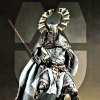
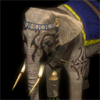
.thumb.png.ce58cea22940c255f5b0a735d5abee36.png)



